NARO has developed a new waxy barley cultivar "Kihadamochi" that contains lot of water-soluble dietary fiber β-glucan, which is a "functional ingredient". It is a six-rowed hulled barley cultivar suitable for cultivation in the Kanto and Tokai region, and is characterized by its high yield, resistance to Barley yellow mosaic virus, tolerance to pre-harvest sprouting, and resistance to lodging. The texture of boiled pearled grain is superior to that of the common non-waxy barley. "Kihadamochi" will contribute to the expansion of domestic production of waxy barley, and is expected to contribute to the revitalization of rural communities and promoting economic development in rural areas.
Overview
The demand for waxy barley that has a good texture and is rich in β-glucan, a water-soluble dietary fiber, is increasing rapidly. However, due to the overwhelming shortage of waxy barley production in Japan in response to the rapid increase in demand, currently 90% of the demand is covered by imported barley. In order to respond to the consumer's persistent domestic agricultural products and to expand domestic production of waxy barley, it is important to breed waxy barley cultivars that have disease resistance and have yields equivalent to or higher than conventional waxy barley.
A new waxy barley cultivar "Kihadamochi" developed by Institute of Crop Science, NARO has strong resistance to barley yellow mosaic virus, tolerance to pre-harvest sprouting, with excellent lodging resistance, and has a higher yield than existing waxy barley cultivars. In addition, among the waxy barley cultivars, the β-glucan content is comparatively high, and the texture is also good in boiled pearled barley.
This barley cultivar is suitable for cultivation in snow-free area from Kanto to Tokai region, and the cultivation has already started in Chiba and Tochigi prefectures. It is expected to contribute to the revitalization of rural areas through the development of various types of products made from "Kihadamochi".
Reference Information
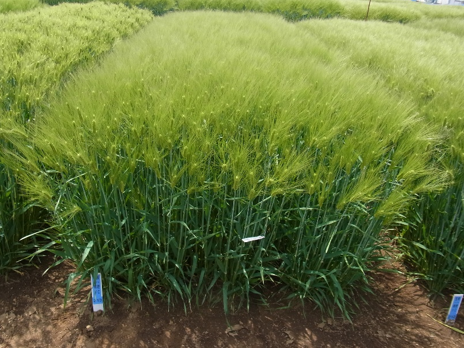
Photo 1. The plant shape of "kihadamochi" at full heading stage
Table 1: Agronomic characteristics of "Kihadamochi"

Table 2: Disease resistance and tolerance of "Kihadamochi"

Table 3: Quality characteristics of whole grains and pearled grains of "Kihadamochi"
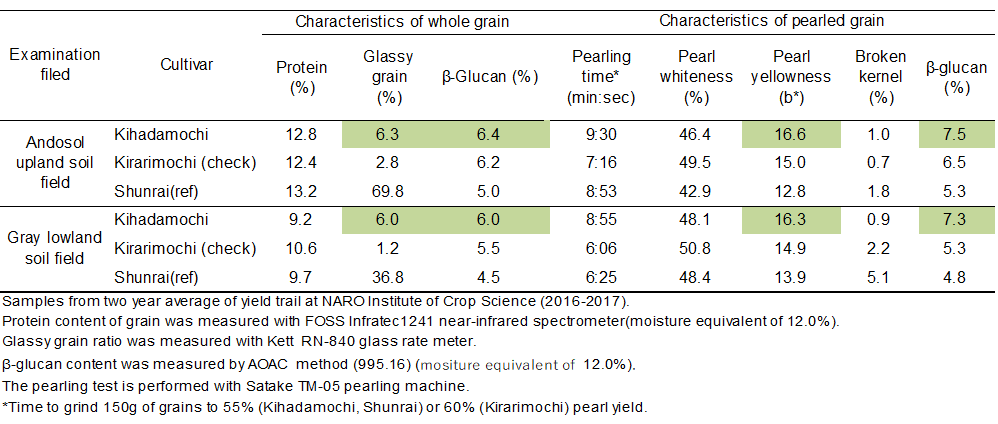
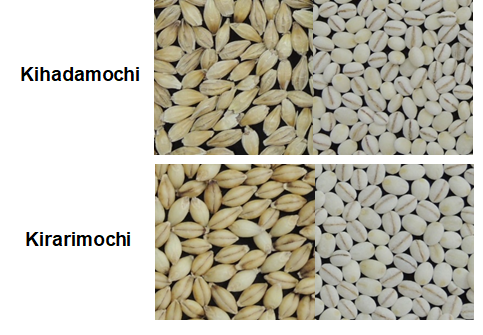
Photo 2. Whole grains (left) and pearled grains (right) of
"Kihadamochi" and "Kirarimochi "(check cultivar)
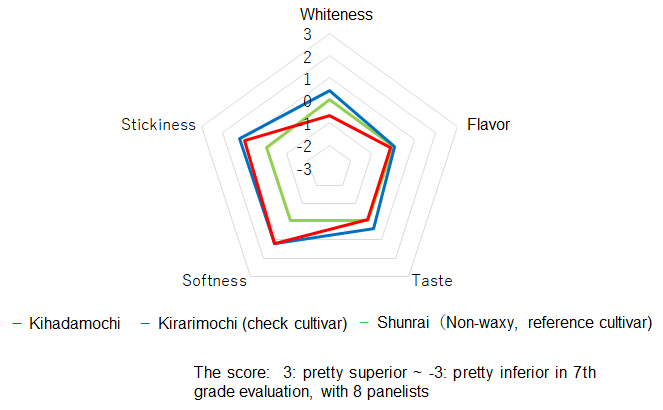
Fig. 1 Sensory test of boiled pearled grain of "Kihadamochi"
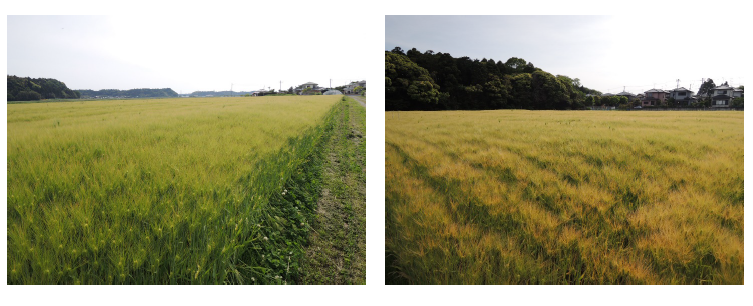
Photo 3. Growth status of "Kihadamochi" in barley farm fields in Chiba prefecture (produced in 2019)
Left: farming association A (yield: 611kg / 10a), Right: farming association B (yield: 673kg / 10a)




